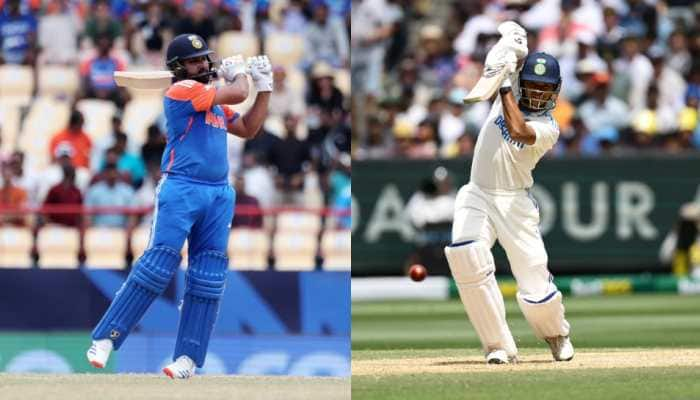Deep drilling to study earthquakes in Maharashtra
A major national project involving deep drilling in the earthquake-prone Koyna intra-plate seismic zone in Maharashtra has been initiated by the central government for conducting scientific studies related to earthquakes, a statement said Thursday.
Trending Photos
)
 Mumbai: A major national project involving deep drilling in the earthquake-prone Koyna intra-plate seismic zone in Maharashtra has been initiated by the central government for conducting scientific studies related to earthquakes, a statement said Thursday.
The project would directly study and measure the in-situ physical properties of rocks, pore-fluid pressure, hydrological parameters, temperature and other parameters of an intra-plate, active fault zone in the near-field of earthquakes -- before, during and after their occurrences.
This would necessitate drilling and instrumenting two pilot boreholes each three km deep in Koyna-Warna region, over the next 18 months.
The study will include drilling of 10 exploratory boreholes at a depth of around 1.5 km surrounding the seismic zone.
Out of these planned 10 boreholes, six have already been drilled at Rasati (1,522 m), Udgiri (1,196 m), Kundi (1,134 m), Nayari (1,211 m), Ukhali (1,500 m) and the hill station of Panchgani (1,500 m), with logging and heat flow measurements, the statement said.
The project, undertaken by the ministry of earth sciences` "Earth System Science Organisation" (ESSO), for which a research laboratory shall be set up at Karad, will be followed by drilling the two three-km deep pilot boreholes.
The other investigations include Broadband Seismology, Magneto-Tellurics, Land-based Gravity-Magnetics, Airborne Gravity and Light Detection and Ranging survey.
Borehole seismometers have been deployed in two holes. It is estimated that at a depth of around five km, the temperatures range between 130-150 degrees Celsius.
Among the significant inferences of these investigations include absence of sediments below the basalt cover, the thickness of the basalt column and its relation with the surface elevation, and almost a flat topography of the basement.
The project assumes significance as the Koyna-Warna region of Satara district in Maharashtra where the Koyna Hydroelectric Project - the largest in the country situated on river Koyna - is the most outstanding example of Reservoir Triggered Seismicity (RTS).
The Koyna Dam was constructed in 1962 and the area was rocked by a 6.7 richter scale earthquake, the largest ever reservoir-triggered quake in December 1967.
Since then, the area of around 20X30 sq km, has been continuously shaken by small and micro-earthquakes of varying magnitude.
The Karad laboratory will be the operational centre for all the research activities related to scientific deep drilling, borehole geophysics investigations and related field research including core analysis.
The issues pertaining to the design of the deep borehole, instrumentation to be deployed, the drilling and its operational plans with international collaboration are being assessed.
Mumbai: A major national project involving deep drilling in the earthquake-prone Koyna intra-plate seismic zone in Maharashtra has been initiated by the central government for conducting scientific studies related to earthquakes, a statement said Thursday.
The project would directly study and measure the in-situ physical properties of rocks, pore-fluid pressure, hydrological parameters, temperature and other parameters of an intra-plate, active fault zone in the near-field of earthquakes -- before, during and after their occurrences.
This would necessitate drilling and instrumenting two pilot boreholes each three km deep in Koyna-Warna region, over the next 18 months.
The study will include drilling of 10 exploratory boreholes at a depth of around 1.5 km surrounding the seismic zone.
Out of these planned 10 boreholes, six have already been drilled at Rasati (1,522 m), Udgiri (1,196 m), Kundi (1,134 m), Nayari (1,211 m), Ukhali (1,500 m) and the hill station of Panchgani (1,500 m), with logging and heat flow measurements, the statement said.
The project, undertaken by the ministry of earth sciences` "Earth System Science Organisation" (ESSO), for which a research laboratory shall be set up at Karad, will be followed by drilling the two three-km deep pilot boreholes.
The other investigations include Broadband Seismology, Magneto-Tellurics, Land-based Gravity-Magnetics, Airborne Gravity and Light Detection and Ranging survey.
Borehole seismometers have been deployed in two holes. It is estimated that at a depth of around five km, the temperatures range between 130-150 degrees Celsius.
Among the significant inferences of these investigations include absence of sediments below the basalt cover, the thickness of the basalt column and its relation with the surface elevation, and almost a flat topography of the basement.
The project assumes significance as the Koyna-Warna region of Satara district in Maharashtra where the Koyna Hydroelectric Project - the largest in the country situated on river Koyna - is the most outstanding example of Reservoir Triggered Seismicity (RTS).
The Koyna Dam was constructed in 1962 and the area was rocked by a 6.7 richter scale earthquake, the largest ever reservoir-triggered quake in December 1967.
Since then, the area of around 20X30 sq km, has been continuously shaken by small and micro-earthquakes of varying magnitude.
The Karad laboratory will be the operational centre for all the research activities related to scientific deep drilling, borehole geophysics investigations and related field research including core analysis.
The issues pertaining to the design of the deep borehole, instrumentation to be deployed, the drilling and its operational plans with international collaboration are being assessed.Stay informed on all the latest news, real-time breaking news updates, and follow all the important headlines in india news and world News on Zee News.
Advertisement
Live Tv
Advertisement







)
)
)
)
)
)
)
)
)
)
